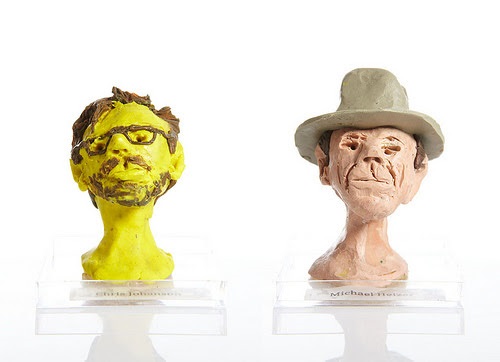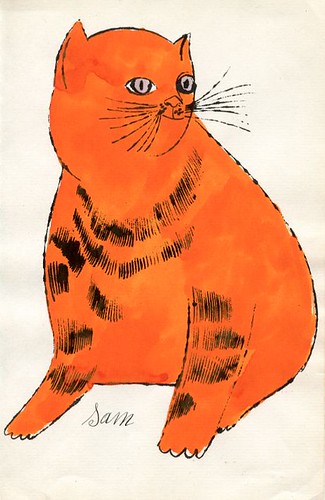
Warhol, et al., in Worcester
“Andy Warhol aside Polaroids of Caroline Ireland,‘‘ about 1979 (digital inkjet print), by Rowland Scherman. (Gift of Howard G. Davis, III A.K.A. David Davis, 2011.162.) © Rowland Scherman, in the Worcester Art Museum’s new show “Photo Revolution: Andy Warhol to Cindy Sherman,’’ which starts Nov. 16. The museum says the show “explores in depth the symbiotic relationship between photography and contemporary art and traces the work of iconic artists from the 1960s to the 1980s.’’
Rockwell and Warhol: An unlikely pairing?
Left, "Freedom from Want'' (oil on canvas), by Norman Rockwell, 1943; right, "Campbell's Soup Can'' (color silkscreen on paper) 1969, in the show "Inventing America: Rockwell and Warhol,'' at the Rockwell Museum, Stockbridge, Mass., June 10-Oct. 29.
Both of these artists portrayed a kind of romanticism. Rockwell liked to say that he painted things the way he wanted life to be. But as he gotolder, he got tougher in recognizing and representing American society's flaws and the contradictions of human emotions and behavior. The nostalgia in his pictures thinned a bit.
I remember with mild fondness his covers for the old Saturday Evening Post, one of about a dozen magazines we got at our house in the '50s and early '60s, before TV killed so many of them. I looked forward much more to the weekly arrival of Life magazine, with its great photos, than to the rather musty Post.
As a kid, I saw the Rockwell covers as corny. Now, in part because I know a lot more about Rockwell's sometimes troubled life, and having read many of his comments on art, his life and America, I see that his work, besides being technically superb, has far more depth than you'd see from glancing at a Post cover. By the way, one reason he and his wife moved to Stockbridge from Vermont is that Austen Riggs, the famous mental hospital is there. Mrs. Rockwell would be treated at the institution from time to time.
As for Warhol, he deeply appreciated the commercial romanticism (the passion for colorful consumer goods) and the craft of Madison Avenue's high-concept popular art during its post-World War II golden age.
When I lived in New York I saw him a couple of times from a few feet away at downtown Manhattan parties. He seemed expressionless --- cold and creepy.
Both Rockwell and Warhol presented longing --- the former for a safer and friendlier world, the latter for a world of color and humor, in which even the seemingly banal could be infused with a kind of goofy joy.
-- Robert Whitcomb
The faces of art
 Work by BILL LIEBESKIND, in his show "We Make Art: 1,001 Artist Portraits'', at the Cape Cod Museum of Art, in Dennis, Mass., through June 14.
Work by BILL LIEBESKIND, in his show "We Make Art: 1,001 Artist Portraits'', at the Cape Cod Museum of Art, in Dennis, Mass., through June 14.
This artist has fashioned 1,001 heads of artists (including alive and long dead) from modeling clay. Incredibly, it took him only two years. Not surprisingly, he also makes comic books.
This project is educational in a number of ways. One is that it's way for people to see what famous artists whose faces are little known actually looked like. (The faces of only a few famed artists are well known, such as those of Andy Warhol and Salvador Dali.)
That might help viewers understand their personalities a bit more.
The museum's blurb says that, in addition to his art about fellow artists, he is "inspired by current events, such as the destruction of the World Trade Center and the dismantling of the Berlin Wall. Liebeskind attempts to make sense of the chaos in the world by using such powerful imagery in his work.''
Don't we all try to make sense of the world's chaos -- until, usually later in life, we give up trying?



